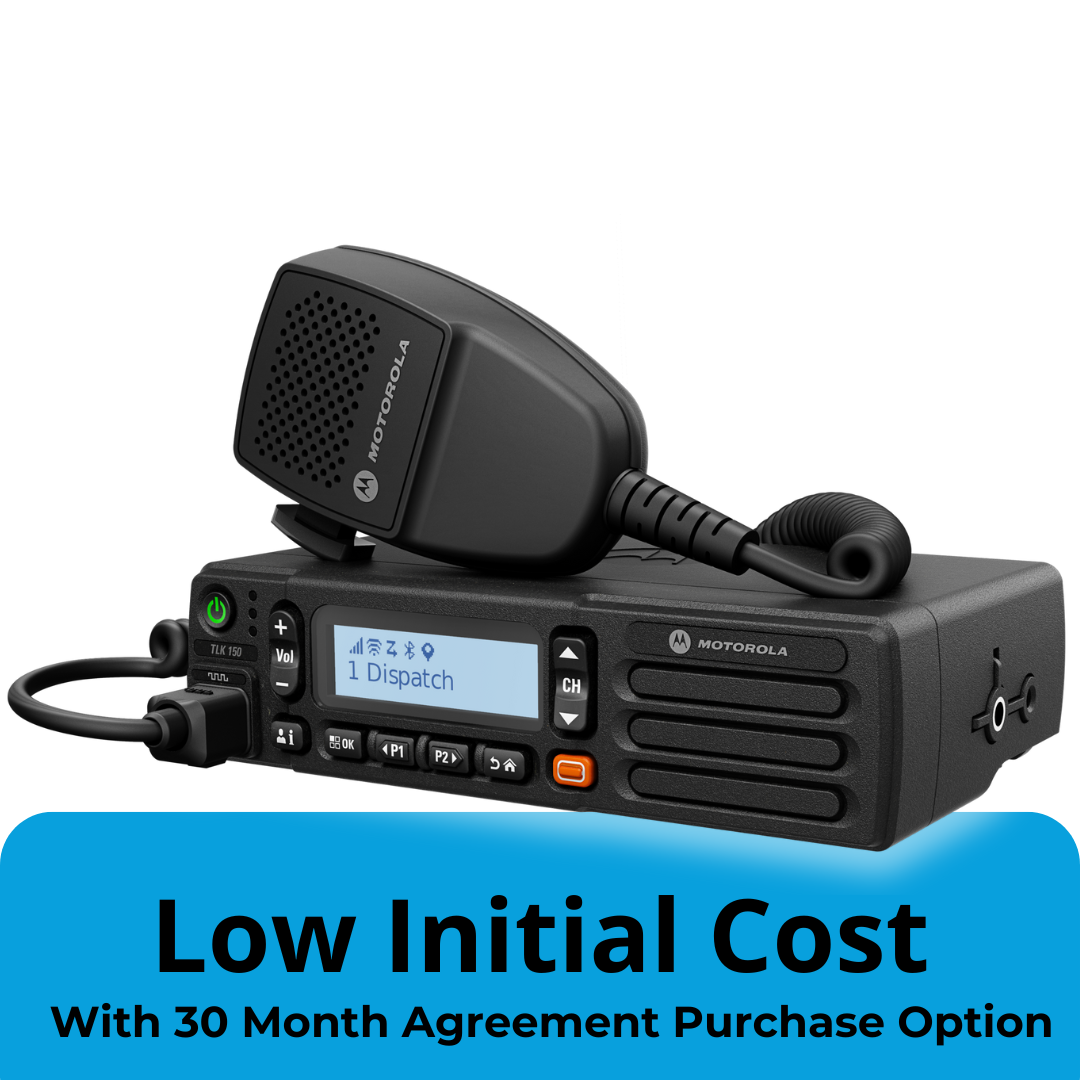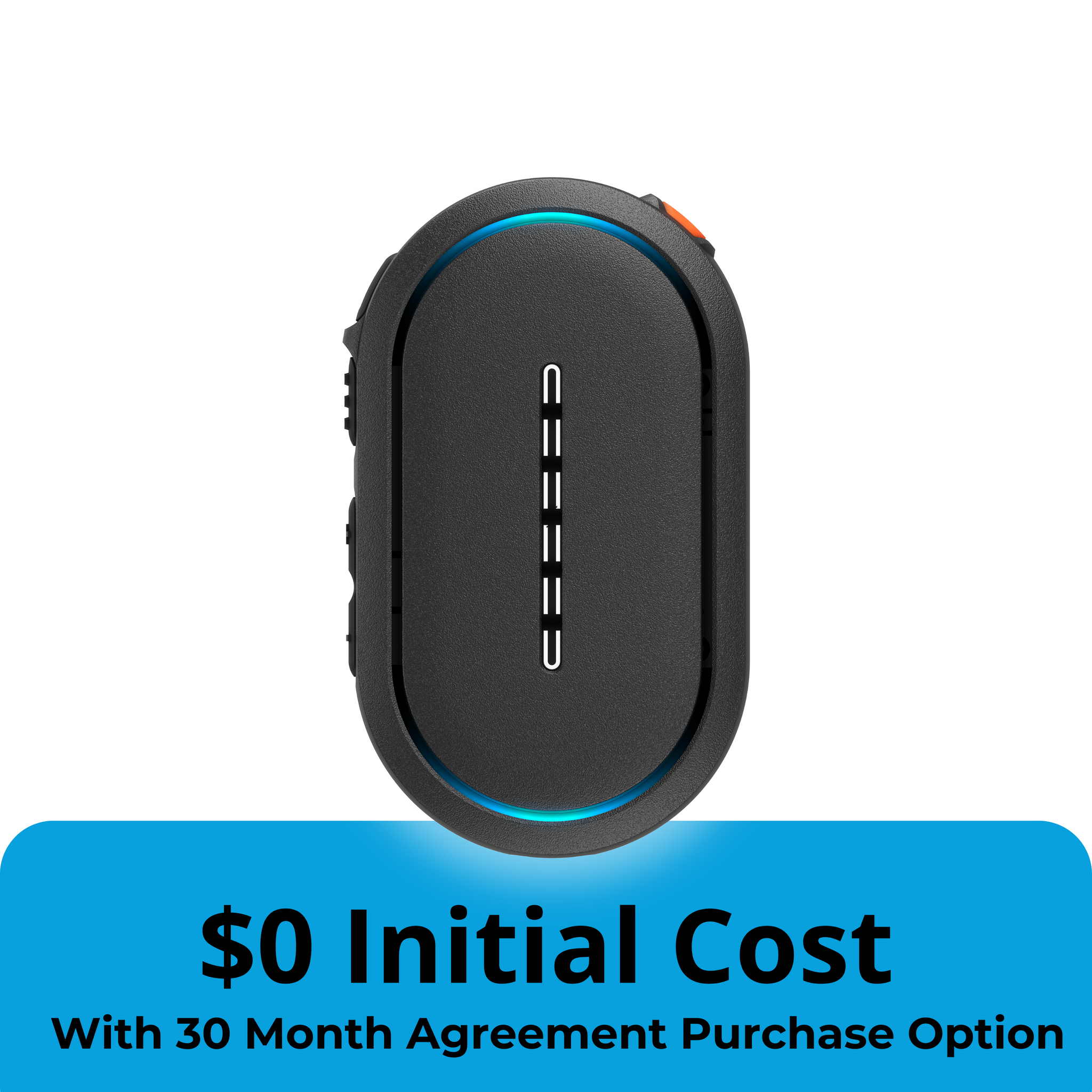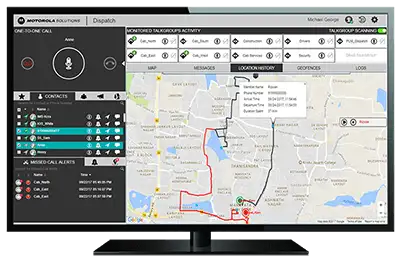TL;DR
- Push-to-Talk over Cellular (PoC) replaces legacy LMR systems with a more affordable, nationwide alternative.
- Motorola’s WAVE PTX offers purpose-built radios (TLK Series) with LTE/Wi-Fi coverage and advanced safety features.
- The ecosystem includes rugged hardware, a web-based dispatch console, and support for lone workers, fleets, and indoor staff.
- No need for ISED spectrum licensing; systems deploy rapidly and scale easily.
- Subscription-based pricing models support both CapEx and OpEx flexibility.
Table of Contents
- What Is Push-to-Talk Over Cellular (PoC)
- Breaking Down PoC
- Inside the WAVE PTX Ecosystem
- How “Nationwide” Coverage Works in Canada
- Beyond Voice: Dispatch, Messaging & Safety
- Financial Model: CapEx vs OpEx
- Where the WAVE PTX Ecosystem Shines
- Is It Right for Your Canadian Operation?
- Key Takeaways
- Frequently Asked Questions
What Is Push-to-Talk Over Cellular (PoC) - And Why Canadian Businesses Are Finally Paying Attention
For decades, Canadian enterprises relied on traditional Land Mobile Radio (LMR) systems - complete with towers, repeaters, spectrum licenses, and jaw-dropping upfront costs - to coordinate teams across job sites, campuses, and cities. But now, there’s a seismic shift underway: Push-to-Talk over Cellular (PoC) has matured into a legitimate, scalable alternative, offering nationwide communication without the LMR price tag. And at the forefront of this transformation is Motorola’s WAVE PTX ecosystem, powered by its rugged TLK Series radios.
If you're a facilities director, fleet operations lead, or safety coordinator trying to modernize how your teams communicate - without deploying private infrastructure or managing frequency licenses - this blog is for you.
Breaking Down Push-to-Talk Over Cellular: A Next-Gen Alternative to LMR
Push-to-Talk over Cellular (PoC) delivers radio-style, one-to-many group communication over existing 4G/LTE and Wi-Fi networks. Unlike legacy LMR systems that require spectrum licenses and hardware-heavy infrastructure, PoC digitizes voice messages into data packets and routes them via the internet to every member of a designated talkgroup. The result? Near-instantaneous, nationwide communication - with zero need for repeaters, towers, or site maintenance.
- Traditional LMR: High CapEx, geographically limited, requires ISED licensing
- PoC (e.g., WAVE PTX): Subscription-based, nationwide, no spectrum licensing needed
- Scalability: Add users or change talkgroup structures without reprogramming radios or modifying infrastructure
Think of it as the best of both worlds: the instant simplicity of walkie-talkies, merged with the scale and intelligence of modern cloud platforms.
Inside the Motorola WAVE PTX Ecosystem: Hardware Meets Cloud Intelligence
The heart of Motorola’s offering isn’t just the WAVE PTX platform – it’s the tight integration of cloud software, mobile apps, dispatch tools, and dedicated hardware. That hardware, the TLK Series, isn’t repurposed consumer tech. It’s purpose-built for demanding work environments.
 TLK 100 – Rugged, Reliable, Distraction-Free
TLK 100 – Rugged, Reliable, Distraction-Free
- Designed for: Frontline teams in hospitality, construction, retail, and logistics
- Highlights: No screen (minimizing distractions), up to 96 channels, IP54-rated, 18+ hour battery life
- Use Case: Simple, voice-driven communication where clarity and durability matter
 TLK 110 – Built-In Safety for Lone Workers & Supervisors
TLK 110 – Built-In Safety for Lone Workers & Supervisors
- Designed for: Security, utilities, and field teams in remote or hazardous conditions
- Highlights: Emergency button, Man Down detection, Lone Worker alerts, AI noise suppression, IP67-rated
- Use Case: A critical tool for teams where safety compliance and monitoring are non-negotiable
 TLK 150 – Vehicle-Ready Radio for Fleets
TLK 150 – Vehicle-Ready Radio for Fleets
- Designed for: Trucking, transit, towing, and municipal fleet applications
- Highlights: External LTE & GPS antennas, FMCSA-compliant, 96 channels, desktop dispatch mode
- Use Case: In-vehicle operation with consistent nationwide coverage
 TLK 25 – Wearable & Whisper-Quiet
TLK 25 – Wearable & Whisper-Quiet
- Designed for: Hospitality, healthcare, and environments where discretion is key
- Highlights: Compact, voice-controlled, Wi-Fi and LTE options, private earpiece communications
- Use Case: Lightweight, wearable comms for concierge, front-desk, or medical staff
 WAVE PTX Dispatch Console – Cloud-Based Command & Control
WAVE PTX Dispatch Console – Cloud-Based Command & Control
- Designed for: Centralized control and multi-channel coordination
- Highlights: Web-based PTT, GPS mapping, multimedia sharing, user presence monitoring
- Use Case: Perfect for dispatchers, supervisors, and operations managers overseeing field teams
How “Nationwide” Coverage Actually Works in Canada
In the Canadian context, Motorola markets WAVE PTX as a carrier-independent platform. But here’s what that really means:
- Each TLK device connects to Canada’s major LTE networks (Bell, Telus, Rogers) using multi-carrier SIMs
- Coverage depends entirely on carrier signal strength at your operational location
- Wi-Fi calling serves as a fallback in buildings or zones with poor LTE reception
TL;DR: You get the flexibility of working across multiple carriers - but you still need to test signal strength where your teams actually work. Field trials are not optional; they’re essential.
Beyond Voice: Dispatch, Messaging & Situational Awareness
WAVE PTX isn’t just a talking tool - it’s a real-time operational command center. Using the web-based dispatch console, managers can:
- Initiate or monitor PTT calls with one or more users
- Track team members live via GPS and map overlays
- Send documents, images, or videos to field devices
- Monitor device status (battery, location, signal strength)
Add the SafeGuard add-on and you unlock mission-critical features like:
- Emergency override: Alert priority calls override all other traffic
- Man Down Detection: Device triggers alerts when no movement is detected
- Ambient Listening: Supervisors can remotely activate a user’s mic
- Dynamic Geofencing: Auto-assign talkgroups based on location
Financial Model: CapEx vs OpEx, Explained
Motorola’s subscription model flips the economics of enterprise communications:
- No infrastructure to build or maintain
- No ISED spectrum licensing required
- Predictable monthly cost per device
You can purchase TLK radios outright (CapEx) or opt for a 30-month contract with $0 down and a slightly higher monthly fee (OpEx). Either way, you avoid the six-figure investment often needed for a private LMR network.
Where the WAVE PTX Ecosystem Truly Shines
✔️ Construction & Utilities
Rugged TLK 110s with IP67 protection thrive in all-weather environments. Safety features protect lone workers and comply with OH&S requirements.
✔️ Transportation & Logistics
The TLK 150 delivers safe, FMCSA-compliant vehicle communications while dispatch monitors fleet movements in real time.
✔️ Security & Facilities Management
Pair TLK 100s for guards with TLK 110s for supervisors. Use the web console to coordinate incident response from a centralized location.
✔️ Hospitality & Events
Discreet TLK 25s enable front-of-house coordination without bulky gear. Wi-Fi fallback ensures building-wide coverage - even in basements.
Is Motorola WAVE PTX Right for Your Canadian Operation?
If you're looking for:
- Nationwide group communication without licensing headaches
- Rugged, distraction-free hardware your team won’t drop (or break)
- Advanced safety features that go beyond what a smartphone can offer
Then WAVE PTX deserves a close look. Just remember: the system is only as strong as your cellular or Wi-Fi coverage. Always conduct field tests before scaling up.
Talk to our team of communication specialists today.
Key Takeaways
- PoC solutions like Motorola WAVE PTX are replacing legacy radio systems - at a fraction of the cost and with far greater flexibility
- TLK devices are purpose-built for field use, vehicle integration, or discreet wearability
- Advanced features support safety, tracking, and centralized dispatch
- Subscription pricing models lower barriers to entry for SMBs and large enterprises alike
Frequently Asked Questions
What is WAVE PTX?
WAVE PTX is Motorola's push-to-talk over cellular (PoC) platform. It enables secure, real-time group communication over LTE and Wi-Fi networks—offering the scale of mobile phones with the simplicity of two-way radios, and without the need for towers or frequency licenses.
How does the TLK Series differ from smartphones?
TLK radios are purpose-built for fieldwork, with rugged enclosures, distraction-free controls, and mission-critical features like Lone Worker and Man Down alerts. Unlike smartphones, they provide instant communication without relying on consumer apps or open networks.
Is WAVE PTX available across Canada?
Yes. All TLK radios use carrier-agnostic SIMs that automatically connect to major Canadian LTE networks (Bell, Telus, Rogers). They also support Wi-Fi fallback in buildings or dead zones, ensuring continuous coverage across urban, rural, and indoor environments.

